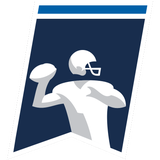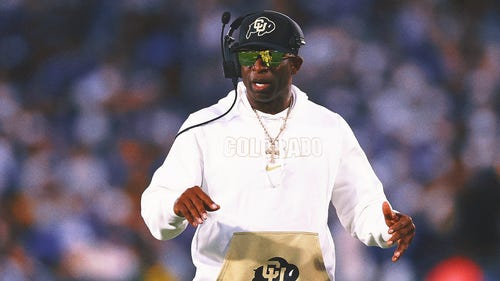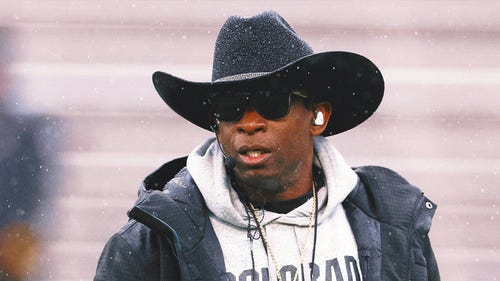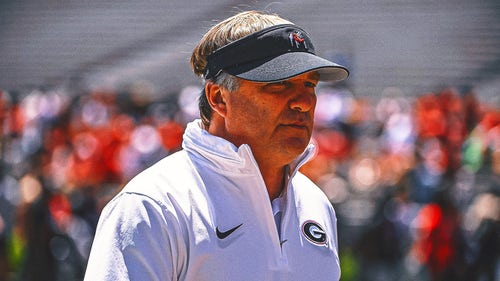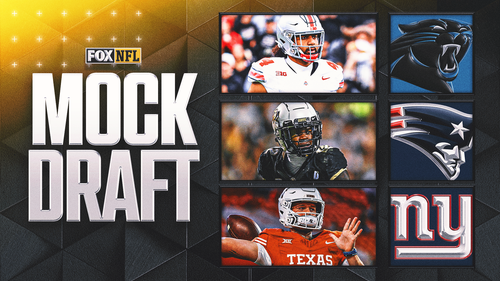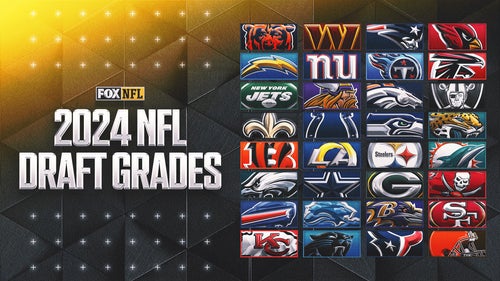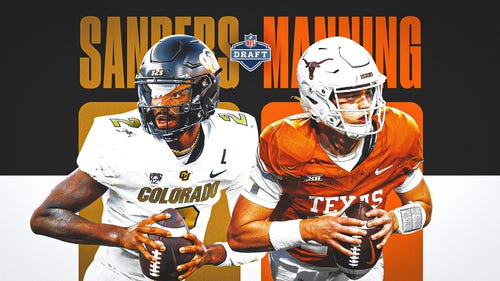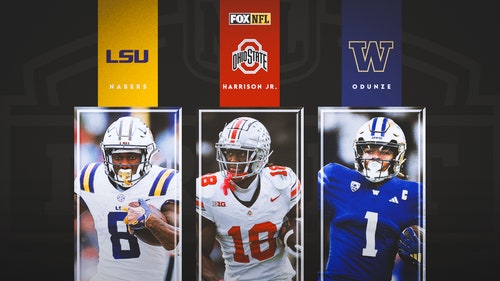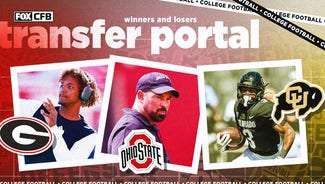
The top 10 college football players of all time ranked – and why Cam Newton is No. 1
By RJ Young
FOX Sports College Football Writer
The Heisman Trophy isn’t great at this.
In fact, it is downright untrustworthy when used as a tool to identify the greatest college football players of all time. Sometimes it gets it right, but not nearly as much as it should.
For example, there's this player: He holds the third-best winning percentage by a starting quarterback with at least 30 career starts since Division I split in 1978. He’s second only to Miami Hurricanes quarterback Ken Dorsey in winning percentage.
He left his school as the winningest starting quarterback in its history. He completed 66.6 percent of his passes for more than 10,000 yards with 90 touchdowns and 17 interceptions for a pass efficiency rating of 164.3.
This means he also broke his conference’s record — once held by a Heisman winner — for passing efficiency and is the first starting quarterback in his league’s history to win three consecutive ACC titles.
He ended his career undefeated as a starter in the regular season across both high school and college. He made five career College Football Playoff starts, setting the record for the most at one school.
He became the first true freshman quarterback to lead his team to a national title in 30 years. His Clemson Tigers became the first major college football team in the modern era to go 15-0, including a 44-16 stomping of Nick Saban’s Alabama
The player who did all that and didn't win the Heisman? Trevor Lawrence.
And I can just stick with Clemson here and tell you about the first 4,000-yard passer and 1,000-yard rusher in the 152-year history of the sport.
He also whooped Nick Saban's Alabama in the national championship. He threw for 405 yards with five total touchdowns in that game. In 2015, he put up more than 5,200 total yards of offense with 47 total touchdowns. His name? Deshaun Watson.
And here's one more: This dude broke multiple national college football records while rushing for 1,925 yards in one season while leading the country in rush attempts with 339.
He was the engine for his team’s undefeated run in the 2004 regular season, taking his squad to the national title game.
And if he played during the Playoff era instead of the BCS one, there's no doubt Adrian Peterson would have rushed for 2,000 yards in 2004. And he didn't win the Heisman.
Choosing questionable winners over the last 50 years era is one issue with using the Heisman to gauge all-time greats — the most egregious reason we can't use it to rank the greats is segregation.
Many people talk about the modern era as beginning post-World War II. I don't consider that the modern era. I consider the modern era beginning when most predominantly white universities began fielding Black players around about 1970.
And while Syracuse running back Ernie Davis became the first Black Heisman winner in 1961, he's nowhere near the top 10 players ever in the sport.
This is especially true when you consider another Syracuse running back. Jim Brown accounted for more than 1,000 yards from scrimmage and averaged better than six yards per clip in 1956 — in just eight games.
The Orange finished 7-1 that season with a Cotton Bowl berth. But Brown finished fifth in the Heisman voting that year.
The man voters gave the award to was Paul Hornung. He somehow won a Heisman while throwing 13 interceptions and just three touchdowns while quarterbacking a Notre Dame team that finished 2-8.
So miss me with whether or not a player has won a Heisman when talking about the greatest players ever.
Any award that could give Paul Hornung the trophy in 1956 and couldn't crown the likes of Jim Brown — let alone acknowledge HBCUs — or acts as if defensive players and offensive linemen cannot be the best player in the sport needs to be destroyed and rebuilt into one that does.
About 900 people vote on the Heisman. Most of those are media members. The rest are former winners. This is fine.
What's not is leaving it to them to rank their top three choices for the best player in the country. You have to build for the underrepresented population in a system designed for the rich — quarterbacks and running backs — to get richer. Rather than ask those voters to simply list their top three players on the ballot, ask them to list one for each unit.
A way to do this is to reevaluate how those players are selected to be on the ballot. The player with the most tackles is arguably as important as the player with the most completions.
Defensive players and offensive linemen need to be included in the conversation all the way up to the finalists, and capping the number of quarterbacks and running backs selected can help ensure we see more equitable treatment across what we continue to call the ultimate team game.
Now that you've indulged my rant about the Heisman, we can talk about my all-time top-10 college football players.
The criteria I considered:
— Was he the best player on his team?
— Did his team win national titles on a team that wasn't full of studs?
— What did he do in Winning Time?
1. Cam Newton

Cam Newton posted video-game numbers in leading Auburn to the national title in 2010. (Jamie Schwaberow/NCAA Photos via Getty Images)
Dan Mullen wanted Cam Newton to start over Tim Tebow. He was that good.
Newton won a national title in both junior college and college. At Blinn College, he and the Buccaneers dropped 60 on Tyler Junior College.
Newton was responsible for 503 of Blinn's 601 yards in that game. They hung 84 on Cisco College. He only accounted for 369 yards in that game and seven TDs.
In the national title game, Blinn beat 11-0 Fort Scott 31-26. The Greyhounds knew what it was gonna be with Cam.
And at Auburn, he put together the greatest single season in the history of the sport in 2010 — the year I graduated college. He brought the Tigers back from a 24-point deficit to beat Nick Saban's Alabama 28-27 in a game we still refer to as the Camback. You know that Auburn team finished 14-0 and with the national title.
Means there's only one team that beat Cam in college: Navarro defeated Blinn 23-20 in the last game of Newton's regular season in JUCO. Between Nov. 1, 2009, and September 10, 2011, Cam didn't lose a single game.
And there was nothing he couldn't do on a football field. He fell just 73 total yards shy of a 3,000-yard passing, 1,500-yard rushing season in what is the most remarkable single season in the history of the sport following a remarkable one in JUCO.
He accounted for 51 TDs and just seven picks in 2010. He rushed for, passed for and caught a touchdown while recording a tackle that season.
Quite simply, there's only one Cam Newton.
2. Reggie Bush

The electrifying Reggie Bush was the catalyst for Pete Carroll's mighty USC teams. (Jamie Schwaberow/NCAA Photos via Getty Images)
Bush was the most electrifying player on a team full of them. In 2005, he beat out one of the most important players in Texas football history for the Heisman, though not for the national title.
With Bush in the backfield, USC won 34 consecutive games and two national titles. In that ‘05 season, he rushed for 1,740 yards with 19 touchdowns. But it’s how silly he made defenses and their coordinators look doing it that we remember most.
When we use "special" to describe a running back, the bar is Bush.
3. Vince Young

Vince Young was a one-man show in leading Texas past USC in the 2006 Rose Bowl, one of the most memorable games in college football history. (Ron Jenkins/Fort Worth Star-Telegram/Tribune News Service via Getty Images)
Young is that player I referred to as the most important player in Texas football history — ahead of Earl Campbell, Kyler Murray and Colt McCoy.
He won the last 20 games of his career at Texas, and made the most important play in school history when he made an improbable run for a touchdown with 19 seconds left to play in the 2006 Rose Bowl against vaunted USC. The TD run won the Longhorns the national title with a memorable 41-38 victory.
That was Texas’ first national title in 35 years.
Young passed for 267 yards and rushed for 200 in the game. He also became the first player ever to pass for 3,000 yards and rush for 1,000 in a season in 2005.
4. Tommie Frazier

Tommie Frazier's mid-1990s Nebraska teams were among the most dominant in college football history. (Photo by Focus on Sport via Getty Images)
When I was a child, there were only three men I loved watching play college football. Charlie Ward and Tommie Frazier.
As a junior in 1994, Frazier missed the first seven games of a 13-game season due to blood clots. No matter, he played the last six games and led Tom Osborne to his first national title in the Orange Bowl against vaunted Miami.
Then, in '95, he did it again.
Frazier and the Huskers beat Steve Spurrier's Florida up one side and down the other 62-24 in the Fiesta Bowl. Under the circumstances, it is what is the worst loss of Spurrier's career.
In that game, Frazier carried the rock 16 times for 199 yards, alongside Lawrence Phillips who carried it 25 times for 165. Ahman Green also carried it nine times for 68 yards just to outline how loaded that team was, and Frazier was the best player on it. This despite Green being the team's leading rusher.
Frazier went 33-3 as a starter — a record in the Big Eight.
5. Herschel Walker

Herschel Walker carried Georgia to a perfect season and the national title as a freshman in 1980. (Photo by Focus on Sport/Getty Images)
It has been 40 years since Georgia last won a national title. When the Bulldogs did, a babe would lead them — a babe like Paul Bunyan's blue ox.
Back when no one played, let alone started freshmen, Walker walked down the SEC with 1,616 yards on the ground with 15 touchdowns in 1980. The Dawgs finished the season 12-0.
In the 1981 Sugar Bowl, playing for a national title in winning time, he busted the Fighting Irish in the mouth for 150 yards with two touchdowns on the ground in a 17-10 victory.
And he did that with a separated shoulder. UGA went 33-3 with Walker in the backfield for three years. He left UGA with 41 school records, 16 SEC records and 11 NCAA records.
6. Jerry Rice

Jerry Rice, center, teamed with quarterback Willie Totten, left, at Mississippi Valley State to shatter the record books. (Photo by Brandon Wade/Getty Images for The Sports Network)
Rice was so intent on becoming the greatest NFL receiver of all time he caught bricks tossed at him by his daddy. And when he got to Mississippi Valley State, he began laying the foundation for his greatness like a mason.
In 1983, he caught 102 passes — the most across all NCAA divisions. In 1984, he caught an FCS record 112 passes for 1,847 yards on the Satellite Express — shout out, Willie Totten.
Rice also caught 27 TDs — the most across all NCAA divisions — and was voted an AP All-American.
Again, Heisman voters ain't great at picking the best player in the sport each year because he finished ninth that year. All this despite MVSU averaging 57 points per game and going 9-2 with a SWAC title.
7. Dan Morgan

Dan Morgan was the heart of the defense for the 2000 Miami squad, which fell just short of a national title. (Andy Lyons /Allsport)
Only one player in the history of the sport has won the Butkus Award for the country’s best linebacker, the Bednarik Award for the country’s best defensive player and the Nagurski Award for College Defensive Player of the Year: Dan Morgan.
Morgan accomplished that feat playing a majority of the season with a broken thumb.
Morgan was the best player on a loaded Miami squad in 2000, missing out on playing for and winning a national title by a year. In four years, he accounted for 532 tackles, including 309 solo ones.
He notched 90 solo tackles among his 138 total in 2000. He accounted for 20 tackles in one game — twice — and 15 tackles six times that year.
8. Baker Mayfield

Baker Mayfield brought swagger to an Oklahoma program that has owned the Big 12. (Photo by Brett Deering/Getty Images)
In 2017, Mayfield became the first player ever to begin his career as a walk-on and win the Heisman. And he is one of the most accurate quarterbacks ever.
This was the crowning achievement for a player who began a run of six consecutive Big 12 championships for Oklahoma.
He finished fourth (2015), third (2016) and first (2017) in the Heisman voting. He left OU with a 39-9 record and led the Sooners to two College Football Playoff appearances, though he never won a semifinal game.
He holds the record for average gain per play and ranks fourth and fifth all-time in passer efficiency in one season behind Joe Burrow, Tua Tagovailoa and Murray. He ranks second behind another Sooner, Sam Bradford, in career passer efficiency and third in career yards per attempt.
He also is the soul of Oklahoma football. His cockiness, his work ethic, his "Us vs. The World" mentality represents not just the Sooners but the Sooner State.
There are better players who have come through Oklahoma, even better quarterbacks. But there is no one who epitomizes what the place stands for, what college football stands for in the 21st century, more than Mayfield.
9. Steve McNair

Steve McNair finished third in the 1994 Heisman voting for Alcorn State. (Getty Images)
Air McNair was so good in 1994 he finished third in the Heisman voting at an FCS and HBCU school. (I told you sometimes this award doesn't know if it's coming or going.)
Coming out of mighty Mount Olive, Mississippi, he engineered the Alcorn State Braves to prominence seldom seen since integration. He left Alcorn with an FCS career record of 14,496 passing yards and 16,823 total yards. He scored 152 TDs with 119 through the air. And in winning time? McNair led the Braves to 11 fourth-quarter comeback victories.
10. Tim Tebow

Tim Tebow ranks as one of the game's ultimate winners, leading Florida to consecutive national championships. (Photo by Tim Larson /Icon SMI/Icon Sport Media via Getty Images)
Tebow was a pioneer.
He was the first player ever to record 20 rushing touchdowns and 20 passing touchdowns in one season. He led Florida to two national titles and became the first sophomore ever to win the Heisman when he threw for 3,286 yards and rushed for 895 yards with 55 total touchdowns in 2007.
As a two-time All-American, he set five FBS records, 14 SEC ones and 28 school ones.
RJ Young is a national college football writer and analyst for FOX Sports. Follow him on Twitter at @RJ_Young. Subscribe to "No. 1 Ranked Show w/ RJ Young" on YouTube and wherever you get your podcasts. He is not on a StepMill.
